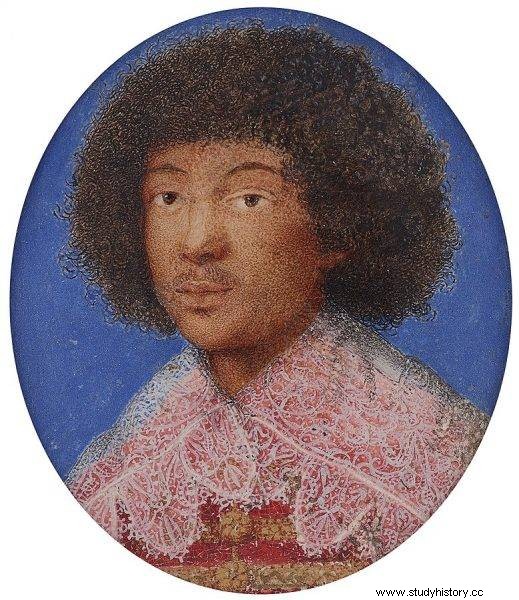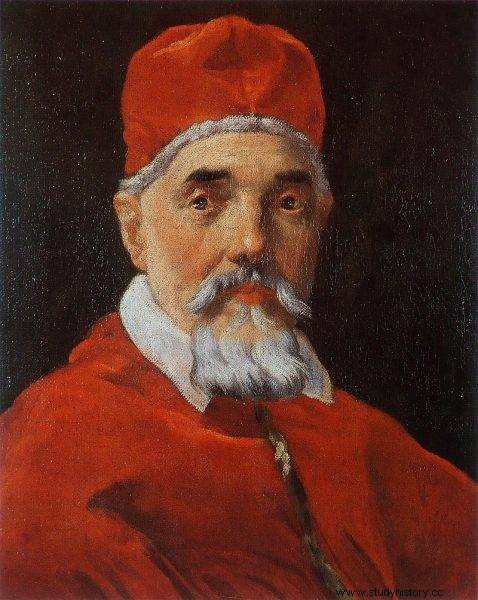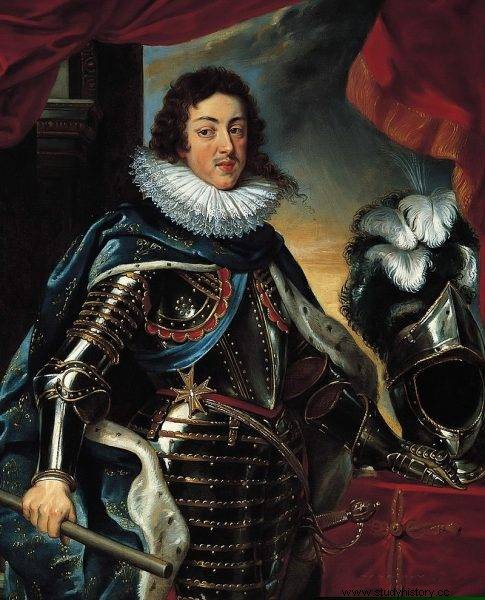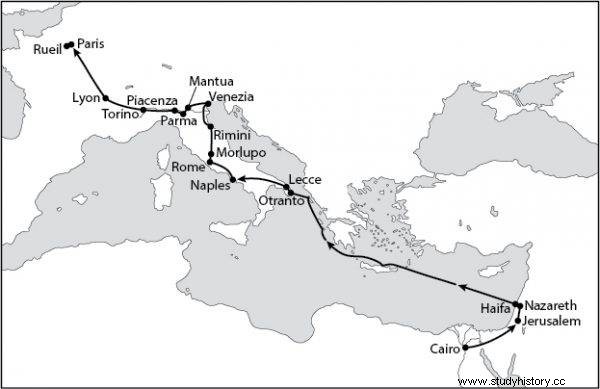The short life of Saga Krestos was one great adventure and a hoax. This black young man turned out to be an amazingly good actor who, thanks to his cleverness and erudition, made an astonishing journey from Cairo to Paris. Along the way, he became involved in the struggle for zones of religious influence, led the Roman curia by the nose and led a lavish life at the expense of Italian princes and Cardinal Richelieu.
On March 10, 1632, a mysterious young man came to the consulate of Venice in Cairo to ask for help. Already at the beginning, he announced that his name was Saga Krestos (Ṣägga Krǝstos) and he was the son of the murdered Ethiopian king Jacob. Under normal circumstances, he would probably have been kicked out the door right away, but fate made his story interesting for church hierarchs.
African swindle
The history of Krestos was believed by Paolo da Lodi, the chaplain of the Venetian consulate. Father Paolo was a Franciscan and representative of the Congregation for the Propagation of the Faith (established in 1622 of the Vatican office, dealing with the expansion of the Church's influence in non-Catholic countries).

This Ethiopian managed to trick the Pope and the King of France!
Da Lodi realized that for the papacy someone like the Saga Krestos could prove very useful . This is because the existing Jesuit institution in Ethiopia has just been liquidated, and Catholicism has started to lose its popularity in favor of the traditional Ethiopian Christian church. The appointment on the Ethiopian throne of a prince cooperating with Rome could reverse this unfavorable trend.
The astute young man, however, had no intention of becoming a passive pawn in the hands of the Roman curia. It was heard in the Venetian consul's Cairo that the Saga Krestos was "a great rogue and a liar" .
If a red lamp lit up in the Franciscan's head, the young impostor found a way to quickly turn it off. During their joint trip to Jerusalem, Krestos converted to Catholicism. As we read in Paolo's father's notes:
[Krestos] sublime expression of his Catholic faith [with what] this humble, godly young man endowed with a princely aura gained enormously in the eyes of our brothers in Jerusalem and Nazareth .
Krestos in the Holy Land had to show a real display of his acting skills and finally convinced the Franciscan to his person. Da Lodi arranged for him a place on one of the Venetian ships bound for Rome and provided him with appropriate letters of recommendation.
Where two are fighting ...
Saga Krestos probably couldn't believe how easily he managed to lead him into the field of Catholics. But the best was yet to come. In September 1632, she left Haifa and soon landed in Italy. Already at the very beginning of his journey, he was greeted with honors, and help on his way to Rome was obtained, among others, by from the viceroy of Naples and the local archbishop.
When the Ethiopian finally reached the eternal city in early 1633, the first problems arose. Despite the letters of recommendation, not everyone was inclined to believe the story of Krestos. The Jesuits linked to Portugal were especially skeptical.
The young Ethiopian was involuntarily involved in the struggle for religious influence in the Black Continent. On the one hand, there was the Congregation for the Promotion of the Faith and the Franciscans, and on the other hand, the Jesuits and their Portuguese patrons. The inclusion of Krestos on the throne of Ethiopia would undermine the status of the Portuguese in this part of Africa. It was clear that the Roman curia and the Franciscans wanted Catholicism to have the strongest position in Krestos' homeland, but this did not necessarily have to happen with the help of the Portuguese Jesuits.
But at that point it was the Franciscans who had better cards in their hands. Pope Urban VIII turned out to be the joker. Before taking up pontificate, he was known as Maffeo Barberini, and his uncle and nepot was the cardinal-protector of the Franciscan Order, Franceso Barberini. Thanks to this complex network of dependencies, the Saga of Krestos' case won the support of the highest hierarchs of the Catholic Church.

Before his pontificate, Urban VIII was known as Maffeo Barberini, and his uncle and nepot was the cardinal-protector of the Franciscan Order, Franceso Barberini.
However, another problem soon appeared. The Ethiopian did not appear in any official chronicles, and the only documents confirming the prince's history were a letter of recommendation from Paulo da Lodi and an autobiography written earlier by Krestos . Other sources of credibility to the story of the young traveler were intensively searched for, but no such sources were found.
Church dignitaries faced quite a dilemma. Without evidence confirming the royal lineage of the Saga of Krestos, Rome could not become deeply involved in the attempt to establish him on the Ethiopian throne. On the other hand, what if he was who he actually said he was? What would happen if he returned to his country and testified that the Catholic Church had turned its back on Ethiopia?
Italian tour
While the Roman curia thought about what to do with the unexpected visitor from Africa, the young Ethiopian enjoyed life and did not think about returning to Ethiopia. He wore regal clothes, showed great self-confidence and the ability to make friends in high circles of the aristocracy. At banquets and social gatherings, he could tell anything he wanted about his princely life, as there was no knowledge of Ethiopia at the time.
His attitude soon began to irritate the church hierarchs more and more, who, assisted by several Franciscan monks, decided to send him to Venice for a while. He spent six months there, then moved successively to Mantua, Parma, Piacenza and Turin.
The charming and exotic guest aroused the curiosity of the visiting Italian princes and, as befits a noble-born person, he was treated with honors everywhere. He was baptized again in Turin, and Prince of Savoy Victor Amadeus I became his godfather.
Thanks to the financial support of another patron, Krestos decided to cross the Alps and go to Paris.
Prince in the city
After a short stop in Lyon, the Ethiopian traveler reached the French capital in mid-June 1635. At this point, the support of the Church ended. The monks who had accompanied him so far had left him and in letters to their superiors made it clear that Krestos had no intention of returning to Ethiopia .
Shortly thereafter, Saga was expelled from a Franciscan-run hospice, and his financial resources began to shrink drastically. In desperation, he wrote to Cardinal Richelieu himself. In the letter, he complained about his fate and asked for financial help.

Louis XIII
Luck smiled at him once again. Louis XIII in his generosity awarded the Ethiopian a staggering 800 Scudi annual salary. For Krestos it was like winning the lottery. Becoming a client of the French court, he returned to a boisterous lifestyle and engaged in numerous affairs (one of his "victims" was even a nun to whom he wrote love letters with his own blood).
Unfortunately, one of his romantic excesses took him straight to his grave. In 1637 he was arrested for attempting to poison François Saulnier, one of the respected Parisian aristocrats. Krestos did it out of affect as he planned to build a life together with his rival's wife, Magdalena Alamant.
Imprisoned in Castle Chatelet, however, refused to give any testimony, explaining that: "He was not born to obey orders, but to give them" . Soon after, he died of pleurisy. The 22-year-old Ethiopian "prince" is buried at Cardinal Richelieu's estate in Ruel.
Because life is a prom
Subsequent research on the person of the Saga Krestos undoubtedly confirmed that he was an extremely audacious and cunning fraud. On the other hand, he had to be very well educated. It is therefore possible that he was the son of an Ethiopian noble or a monk from that part of Africa.
He was certainly not the heir to the Ethiopian throne. The story he sold to the Catholic hierarchy was very far-fetched, but only a person with an understanding of the history of Ethiopia at that time could disprove it . But there was probably no one like that on the entire European continent then.

Saga Krestos on a trip around Europe
Certainly Krestos was very lucky, as his case became an element of an internal struggle for influence. Nevertheless, the young Ethiopian cannot be denied his exceptional charisma, erudition and cunning. The manner in which he presented his story and the ease with which he spoke with the greatest powerful of his time must be admirable. He cunningly used favorable circumstances, his exotic appearance and Europeans' fascination with distant lands to lead a life that everyone would dream of for several years.
Bibliography:
- Christopher L. Miller, Blank Darkness - Africanist Discourse in French , London 1985.
- Matteo Salvadore, “I Was Not Born to Obey, but Rather to Command”:The Self-Fashioning of Ṣägga Krǝstos, an Ethiopian Traveler in Seventeenth-Century Europe , Journal of Early Modern History (accessed 04/06/2021).
- Andrzej Bartnicki, Joanna Mantel-Niećko, History of Ethiopia , Warsaw 1987.
